Villa with a changeable past
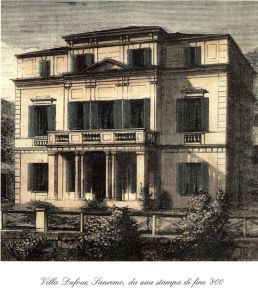 The present building, located in the street of the same name just above Corso Cavallotti, is the result of a series of extensions to an original small villa built by the Marquis Eugenio Dufour in 1864 to a design by the surveyor and building contractor Giovenale Gastaldi senior from Biella, while the contract for the construction was awarded to the young master builder Marco Carlo.
The present building, located in the street of the same name just above Corso Cavallotti, is the result of a series of extensions to an original small villa built by the Marquis Eugenio Dufour in 1864 to a design by the surveyor and building contractor Giovenale Gastaldi senior from Biella, while the contract for the construction was awarded to the young master builder Marco Carlo.
 Marquis Dufour was succeeded in the ownership of the villa by Duke Gandolfo, a wealthy landowner, who had the architect Pio Soli design and build a grandiose extension of the building, which in 1903 took on the characteristics of today's building, while still maintaining the functions of a residence for wealthy families of foreigners.
Marquis Dufour was succeeded in the ownership of the villa by Duke Gandolfo, a wealthy landowner, who had the architect Pio Soli design and build a grandiose extension of the building, which in 1903 took on the characteristics of today's building, while still maintaining the functions of a residence for wealthy families of foreigners.
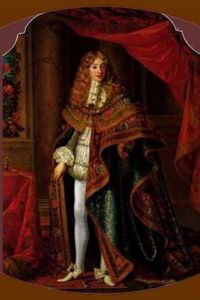 Starting from 1874 the villa was inhabited for three consecutive seasons by the Duke of Aosta Amedeo di Savoia and his wife, Duchess Maria Vittoria dal Pozzo della Cisterna, who had settled there in the hope of recovering her ill health thanks to the benefits of the healthy climate of the Riviera, but who died in Sanremo on 8 November 1876 amid general condolences, so much so that the gardens were dedicated to her memory, on whose area the Municipal Casino was to be built in 1905.
Starting from 1874 the villa was inhabited for three consecutive seasons by the Duke of Aosta Amedeo di Savoia and his wife, Duchess Maria Vittoria dal Pozzo della Cisterna, who had settled there in the hope of recovering her ill health thanks to the benefits of the healthy climate of the Riviera, but who died in Sanremo on 8 November 1876 amid general condolences, so much so that the gardens were dedicated to her memory, on whose area the Municipal Casino was to be built in 1905.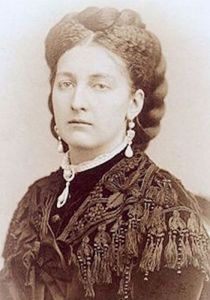
To worthily commemorate the stay of the Dukes of Aosta, Marquis Dufour had a plaque affixed to the entrance of the villa on 1st December 1876, with an inscription in French in which he expressed his deep gratitude to the dukes and their family for having chosen his villa as their residence in our city.
Later the villa welcomed the Persian princess Agabiker Kadjar as a tenant, while between 1925 and 1926 he hosted the last Ottoman sultan Mohammed VI, who had come to Sanremo in voluntary exile on 19 May 1923, settling with his court for the first two years at Villa Nobel and the adjacent Villa Miraflores, from where he would move to the present Villa Magnolie following the mysterious suicide of a high dignitary in his retinue.
During his stay in Matuzzo, which was characterised by extreme secrecy, the Sultan met on 12 November 1923 at the Casino with King Vittorio Emanuele III, who had come to the city for the inauguration of the monument to the fallen in the current course Mombello.
During his stay at Villa Magnolie, Mohammed VI received, among other things, a delegation of young Turkish university students who had come to San Remo to pay homage to him and sent a proclamation on 13 May 1926 to the representatives of the Islamic world, gathered in Cairo, to urge them to prevent Mustafà Kemal Ataturk from imposing his dictatorship on the peoples of Anatolia as well.
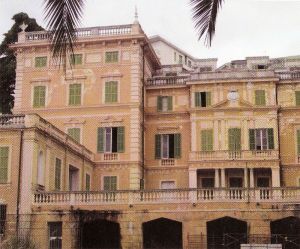 Two days after this last message was sent, the Sultan died in the villa he had chosen as his last residence, where his body was exposed for thirty days in a precious sarcophagus placed in a large hall of the building.
Two days after this last message was sent, the Sultan died in the villa he had chosen as his last residence, where his body was exposed for thirty days in a precious sarcophagus placed in a large hall of the building.
On the following 16th June, the solemn funeral of Mohammed VI took place, whose body was transported to the station in an old wagon of the Sanremo Green Cross and placed on a wagon of a convoy bound for Trieste, from where the coffin would be transferred to Damascus to be buried there.
During his stay in our city, Muhammad VI also met Fausto Zonaro, who had been in Constantinople between 1891 and 1907 as official painter of the Ottoman Court, performing, among other things, various portraits of the future Sultan.
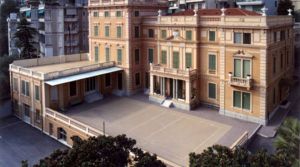
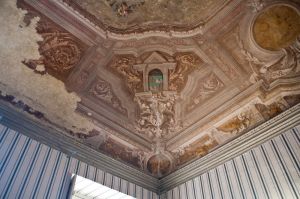 After 1928 the villa was used as a school, first as St. George's School until 1936, then as a school of Catholic inspiration, which took the name of Istituto San Giorgio, from the mid-1950s and finally as a private middle school run by the Doctrinari Fathers.
After 1928 the villa was used as a school, first as St. George's School until 1936, then as a school of Catholic inspiration, which took the name of Istituto San Giorgio, from the mid-1950s and finally as a private middle school run by the Doctrinari Fathers.
Recently the villa has been purchased by the Province of Imperia, which has provided for its use as a secondary school of the local "G.D. Cassini' classical high school.
(sources: A.Gandolfo from the book "Sanremo, guide to the artistic heritage"; images from private archives)





